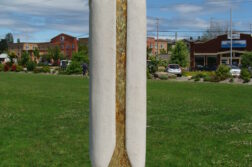Proustomania
To G&LR Readers:*
So much has been written about Marcel Proust—with a new wave at his 150th birthday—that at a certain point one may have to ask oneself: Have I read more about Proust than I have read of his work? There are still whole swaths of his great novel, In Search of Lost Time, that I have not read, but I’ve lost count of the books about Proust, no matter how narrow their focus, that I’ve devoured.
The problem with “Proustomania” is not only the endless riches of the novel itself, but also the fascination of its supremely intelligent author—a man who fought a duel over a journalist’s claim that he was an ‘invert”; but led what we would call today a very “gay” life. That Proust was homosexual there can be no doubt; but no one would call In Search of Lost Time a “gay novel.” And yet, it’s probably the greatest one there is, though such a category is ours, not Proust’s.
Proust said the only duty of an artist was to provide for his readers an original vision of life, and for Proust that included same-sex love. Even before the novel came out, he warned prospective publishers that it would include a look at the homosexual world. He was even at times afraid that another writer was going to beat him to it. He need not have worried. Proust’s book remains an achievement that has not been surpassed, and that includes his portrayal of homosexual love.
Andrew Holleran, Washington, DC
* First appeared as the intro to July’s G&LR newsletter.
Evidence for Same-Sex Love in Byzantium
To the Editor:
In his review of Roland Betancourt’s Byzantine Intersectionality [May-June 2021 issue], Vernon Rosario states: “As with so many examples of pre-19th-century relationships, it takes a degree of wishful, ahistorical projection for us to see them [i.e., Boswell’s ‘brother making ceremonies’] as ‘gay.’”
Not so. That these unions were seen as “gay” (i.e., involving same-sex genital behavior) even well before Boswell and the 20th century is evidenced by no less authoritative an ecclesiastical text than the Pedalion, the code of canon law of the Eastern Orthodox Christian Church. In its chapter on marriage, expressly prohibiting the “adelphopoiesis” ceremony, the Pedalion explains that “wedbrotherhood … merely affords matter for some persons to fulfill their carnal desires and to enjoy sensual pleasures, as countless examples of actual experience have shown at various times and in various places.” (See “Concise and Accurate Instructions Concerning Marriages” in Chapter 10, “Brothership by Adoption,” in The Rudder (Pedalion),” translated by D. Cummings (1957).)
Franco Mormando, Cambridge, MA
A 19-Century Vision of Liberation
To the Editor:
Andrew Holleran’s article “A Paradox of Victorian Sex” (May-June 2021) [on Victorian man of letters John Addington Symonds]describes a courageous work to which not enough attention is given: the actions that had to occur in a world before there could be an Out community. Someone had to look beyond the extreme ignorance and intolerance of the time and visualize acceptance and inclusiveness when there was no Pride march or rainbow flag to proclaim it. Someone had to reach out to others and make social and political connections when there was no visible community.
Holleran gives us our history, and we should remember it with respect. There are still marginalized identities that haven’t yet been given recognized names and don’t have communities. For people in that position, it gives an example to follow. Standing up and speaking out require more than courage—there are methods that work and processes that resulted in a movement for social change, and it is important to document them, because discovering how to move forward was not easy.
Allan Hunter, New Hyde Park, NY



